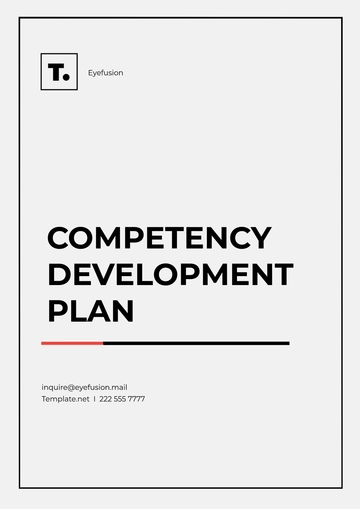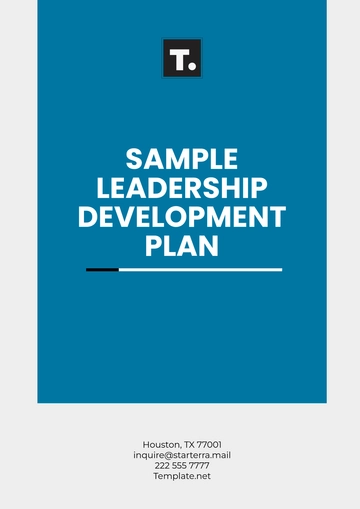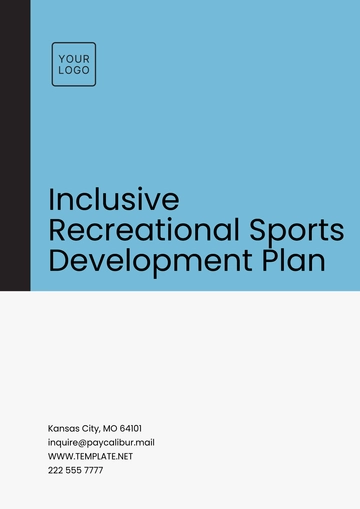Free Blank Sports Media Partnership Development Plan

Prepared by: [Your Name]
Date: June 8, 2050
1. Executive Summary
Objective:
Define the goal of the partnership, such as enhancing brand visibility, generating revenue, or expanding audience reach through strategic collaborations.Target Market:
Identify the demographics, psychographics, and geographic regions to target with the partnership.Key Partners:
Identify possible collaborators within the sports and media sectors, such as media outlets, sports teams, sponsors, broadcasters, and influencers.
2. Partnership Goals and Objectives
Primary Goal:
Identify the primary goals of the partnership, such as boosting brand visibility, generating advertising income, and improving fan interaction.Measurable KPIs:
Identify metrics to assess success, such as media impressions, social media interactions, ticket sales, and merchandise sales.
3. Partner Value Proposition
For Sports Organizations:
Explain how the partnership benefits the sports entity, such as through new revenue opportunities, improved fan interaction, and increased media exposure.For Media Outlets:
Describe the benefits for the media partner, such as exclusive rights, increased viewership, sponsorship opportunities, and content creation.
4. Partnership Structure
Roles and Responsibilities:
Clearly outline each party's roles in the partnership, such as content creation, distribution, and marketing.Revenue Models:
Explore possible models for sharing revenue, such as advertising income, sponsorship agreements, or licensing arrangements.Content Rights and Distribution:
Describe the strategy for disseminating and distributing content across various platforms such as TV, digital, social media, and live streams.
5. Marketing and Promotion Strategy
Joint Marketing Campaigns:
Develop co-branded campaigns that leverage both partners’ networks.Social Media Strategy:
Devise a strategy for using social media channels to market the partnership, such as through influencer partnerships, content series, or live events.Event Promotion:
Discuss ways to enhance event exposure, such as cross-promotion, sponsored activations, and community outreach.
6. Legal and Financial Considerations
Contract Terms:
Define the duration of the partnership, renewal terms, and exit strategies.Sponsorship and Advertising Agreements:
Clarify the sponsorship tiers, ad placement, and any exclusive or non-exclusive terms.Revenue Sharing Agreement:
Outline how revenue will be split among partners, including sponsorship deals, ticket sales, and merchandise.
7. Implementation Timeline
Phase 1: Partner Outreach and Negotiation
Timeline for identifying and reaching out to potential partners, followed by negotiations.Phase 2: Finalizing the Agreement
Deadlines for contract finalization, including legal reviews and approvals.Phase 3: Launch and Activation
Schedule for the partnership launch, including content roll-out, media buys, and event activations.
8. Risk Assessment and Contingency Plans
Potential Risks:
Detect potential risks, such as partnership disagreements, ineffective campaigns, or market changes, and suggest strategies to address them.Contingency Plans:
Prepare strategies for unexpected situations, such as diversifying revenue sources, modifying content plans, and managing crises.
9. Evaluation and Reporting
Performance Metrics:
Define how success will be tracked and measured across both short-term and long-term goals.Regular Reporting:
Establish a schedule for consistent updates and progress reports among partners, such as monthly or quarterly.Post-Event Analysis:
Conduct post-campaign evaluations to analyze the outcomes, including media coverage, ROI, and future partnership opportunities.
10. Conclusion and Future Opportunities
Review of Partnership Potential:
Summarize the anticipated outcomes of the partnership and discuss future collaboration opportunities.Sustainability and Long-term Growth:
Explore possibilities for extending the partnership or evolving into a long-term business relationship.
- 100% Customizable, free editor
- Access 1 Million+ Templates, photo’s & graphics
- Download or share as a template
- Click and replace photos, graphics, text, backgrounds
- Resize, crop, AI write & more
- Access advanced editor
The Blank Sports Media Partnership Development Plan Template from Template.net is an editable and customizable tool designed to streamline your partnership planning. Easily tailor every section to your specific needs using our intuitive Ai Editor Tool. Save time and enhance your strategy with this fully editable template, perfect for any sports media collaboration.





























